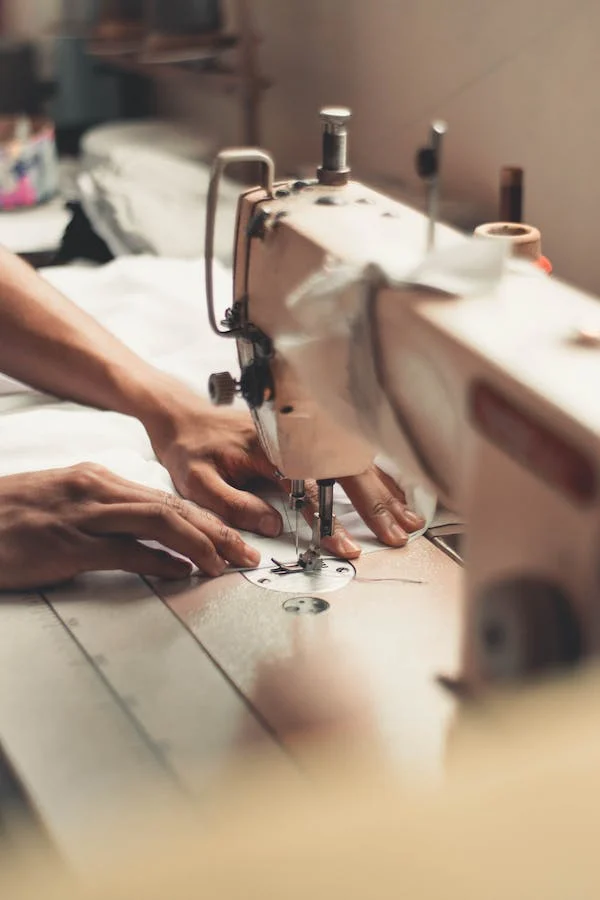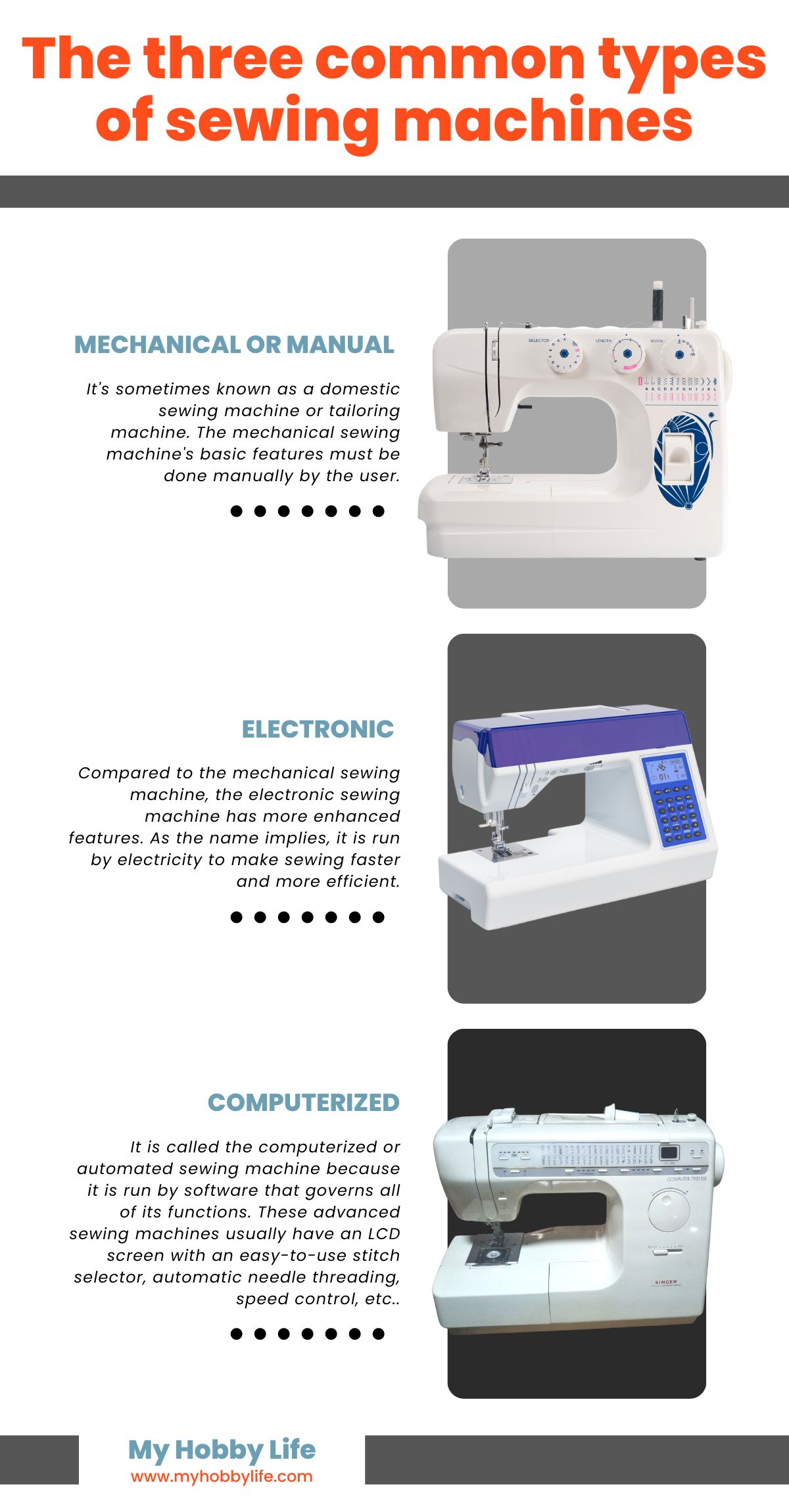Do you long to be your fashion designer? It may seem difficult to start from scratch, but learning to sew each piece of clothing and bringing it together is a great way to develop your unique style.
That may come as a surprise, but sewing is on-trend right now. Sewing is a skill that has many practical applications, but it also has the added benefits of reducing stress and enhancing hand-eye coordination. It is a great moment to give sewing a try; there are plenty of accessible independent sewing designs available, not to mention a wide variety of beautiful fabric options.
The real thing will be easy and go well if you take the time to practice and make examples using this guide.
Learning How to Sew
Getting sewing lessons is a breeze in this day and age, all due to the internet. You may learn to sew at your leisure, without leaving your house, by taking advantage of free sewing classes and online tutorials. If you’d rather have something in print, plenty of sewing books cover everything from how to use common sewing machines to how to sew on buttons.
Starting Simple
A solid grasp of the principles is the most useful tool for sewing garments at home. Learning or refreshing your fundamental sewing abilities is a prerequisite to tackling more complex tasks.
Become comfortable with a needle and thread by beginning with simple mending jobs. Keeping clothing around for longer helps the environment. In addition, the ability to repair a rip, sew on a button, or hem a garment are all useful in daily life.
Sewing Tools
Sewing machines, fabric scissors, pattern paper, and measuring tape are just a few of the many instruments needed to create wearable garments. There are several commercially available sewing kits, but you can also assemble your own by recycling a small bag or jar and stocking it with the items detailed below.
1. Sewing Pins
Sewing pins are crucial for keeping fabric and patterns in place while hand or machine stitching. Pins can cause permanent distortion to the fabric; thus, they should be used carefully.
2. Seam Ripper
Whether they are just starting or are seasoned veterans, even the best seamstresses are bound to make a few blunders now and then. A seam ripper is useful in this situation. This tool will be used to undo the incorrect stitches in the event of an error.
3. Scissors
You need a large dressmaking set of scissors that you will use exclusively for cutting cloth; otherwise, they will become dull more rapidly and may even tear or fray your fabric. Sharp embroidery scissors or thread snips are also useful for nipping away excess thread and fabric scraps.
4. Rulers
Drafting and measuring with rulers throughout construction is a must.
5. Tape Measure
You can utilize this to get the right measurements in case of a poor fit.
6. Chalk
Marking the fabric with chalk helps with sewing and cutting.
7. Tracing Paper
You may create your patterns and make adjustments while you sew with the help of tracing paper.
8. Iron and Ironing Board
Regardless of its quality, you can use the iron you already have, but you should plan to upgrade soon. During stitching, you’ll use the iron to press the garment, ensuring that the seams stay open.
Buying a Sewing Machine
Formerly, all sewing had to be done by hand, but with the advent of the sewing machine, mass manufacturing of garments became possible, and in turn, helped the rise of the fashion industry. You may want to purchase a sewing machine to begin making your garments.
Making, altering, or repairing your clothes at home can save you much money over time compared to buying new items or hiring a professional. Yet, getting started can require a large financial investment. Learning to sew on a machine will require time and effort, but the rewards are worthwhile.
Types of Sewing Machines
There are many different kinds of sewing machines available to fit your needs and your budget, but the three most common are:
Mechanical or Manual
Mechanical sewing machines, which can be treadle or hand-operated, are the most fundamental type of machine. They were made to function in the absence of regular access to electricity. The mechanical device in play is the treadle machine or hand crank that drives the needle and creates the stitches.
Electronic
Both electronic and mechanical sewing machines are capable of standard and fancy stitching. A buttonhole choice may be made available. Instead of a digital control panel, a knob activates the various features.
Computerized
Modern computerized sewing machines incorporate buttonhole makers and preprogrammed stitches. These machines are more costly, but they last for a very long time and are quite reliable. Reputable manufacturers typically provide lessons and guarantees on these top-tier devices.
The features and workload you anticipate will determine your ideal sewing machine.
Choosing Your Fabric
The fabric you use in your project will determine how successful it is. Fabrics may get pricey, so one strategy to save money is to look for old or secondhand clothing that can be repurposed or used as a source of design inspiration.
You can also save money by shopping online or waiting for fabric stores to have clearance discounts. If you are working on a larger scale, you can practice on old sheets if you are attempting to cut costs.
Knowing the basics of dealing with various textiles (e.g., cotton, silk, wool) might help you choose the proper fabric for your project. It’s a good idea to do preliminary research on the garment you intend to sew, like window-shopping at similar businesses and taking note of the materials currently in fashion before you set foot in a fabric shop. The best approach to learning about the role of fabric in a garment and the current trends in fabric use is to wear the item.
Ensure you buy enough fabric for your project when you buy it.
Making Your Clothes
You can then move on to the next step: creating your garments. To make sense of sewing lessons, you must first familiarize yourself with patterns and common sewing terminology.
Making a pattern requires you to take specific dimensions. Make sure the garments you sew fit when you’re done by measuring yourself before you start. This is true even if you use a preexisting pattern instead of designing your own.
Patterns should be perfected before going into production. You may find many patterns online, and many sewing blogs encourage their readers to share their patterns with one another. You can also learn to draft your sewing patterns based on the garments you currently possess and love.
Sewing Tips
When you’re ready to begin sewing, consider the following simple tips:
Match Your Threads
If you’re using a sewing machine, be sure the threads are identical in material and thickness. This is done so that things stay manageable and don’t have an uneven strain or break. As long as it’s the same type of thread, you can even change colors to match the inner and outside fabric or make artistic stitching.
Starting with an empty bobbin and winding thread from the spool into it is the simplest way to guarantee that your threads will match up throughout your project. Use multiple bobbins simultaneously instead of constantly rethreading your machine if you frequently work with the same spool.
Always Be Sure You’re Using The Right Needle
A universal sewing machine needle should work fine if you’re sewing on cotton blends, cotton, or certain synthetic fabrics. If you use the incorrect needle, you risk damaging your fabric and creating an uneven stitch.
Maintain Straight Lines and Neat Curves
If you want your stitches to be perfectly straight, align the edge of your cloth with one of the lines on the sewing machine’s needle plate. You can pick up the pace after you start gently and build up your confidence.
Carefully stitch while twisting the fabric with both hands to create a smooth curve. If possible, do so continuously; if not, or if a sudden turn is required, ensure the needle is always inserted into the fabric before stopping.
Always Have Some Extra Fabric on Hand for Testing
Always have some scrap cloth on hand for trying out a new stitch or thread color. You may evaluate your stitches’ breadth, length, and thread color in this way. You can practice buttonholes and decorative stitches on scrap fabric before using them on your final product.
Ensure Sufficient Thread Supply
Ensure your bobbin is in good order before beginning a new project. If you’re sewing a difficult seam or seam, you want to have enough thread in the middle of it.
Accept That You Will Make Mistakes
An error from even the most skilled seamstress is inevitable. It’s normal to make mistakes and unpick when you sew, regardless of how long you’ve been doing it. Your frustration at having to rip out stitches or start over will lessen if you realize and accept this.
There’s also the adage, “Practice makes perfect.” If you take the time to practice your sewing, you can make changes without having to start again and be on track to making the clothes you’ve always dreamed of. You don’t even have to be a professional seamstress!


